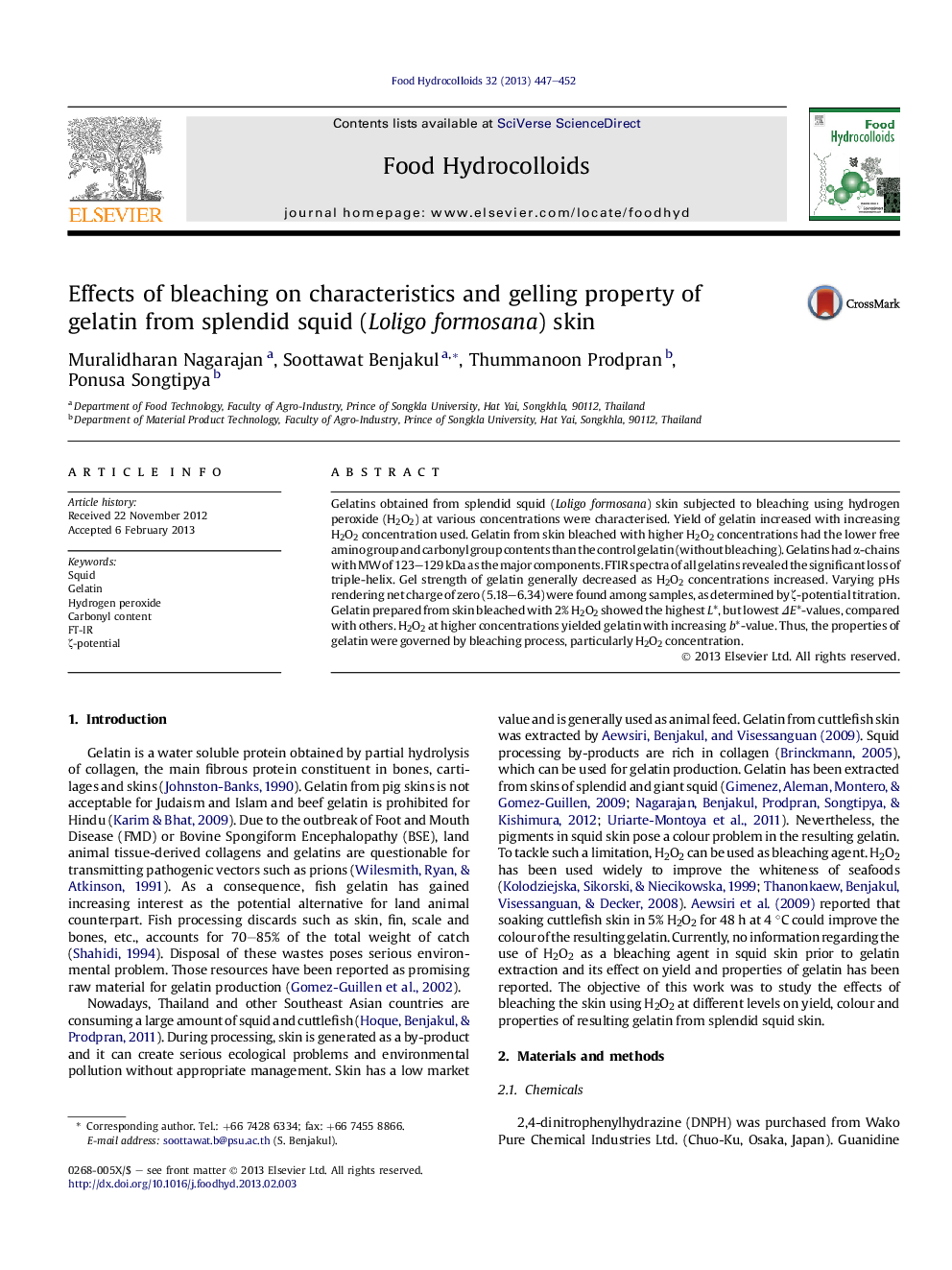| Article ID | Journal | Published Year | Pages | File Type |
|---|---|---|---|---|
| 603991 | Food Hydrocolloids | 2013 | 6 Pages |
Gelatins obtained from splendid squid (Loligo formosana) skin subjected to bleaching using hydrogen peroxide (H2O2) at various concentrations were characterised. Yield of gelatin increased with increasing H2O2 concentration used. Gelatin from skin bleached with higher H2O2 concentrations had the lower free amino group and carbonyl group contents than the control gelatin (without bleaching). Gelatins had α-chains with MW of 123–129 kDa as the major components. FTIR spectra of all gelatins revealed the significant loss of triple-helix. Gel strength of gelatin generally decreased as H2O2 concentrations increased. Varying pHs rendering net charge of zero (5.18–6.34) were found among samples, as determined by ζ-potential titration. Gelatin prepared from skin bleached with 2% H2O2 showed the highest L*, but lowest ΔE*-values, compared with others. H2O2 at higher concentrations yielded gelatin with increasing b*-value. Thus, the properties of gelatin were governed by bleaching process, particularly H2O2 concentration.
Graphical abstractFigure optionsDownload full-size imageDownload as PowerPoint slideHighlights► Bleaching the squid skin at higher concentration of H2O2 increased gelatin yield. ► H2O2 at a concentration of 2% used for bleaching improved the colour of gelatin. ► Skin bleached at higher concentration of H2O2 rendered gelatin with lower gelling property.
